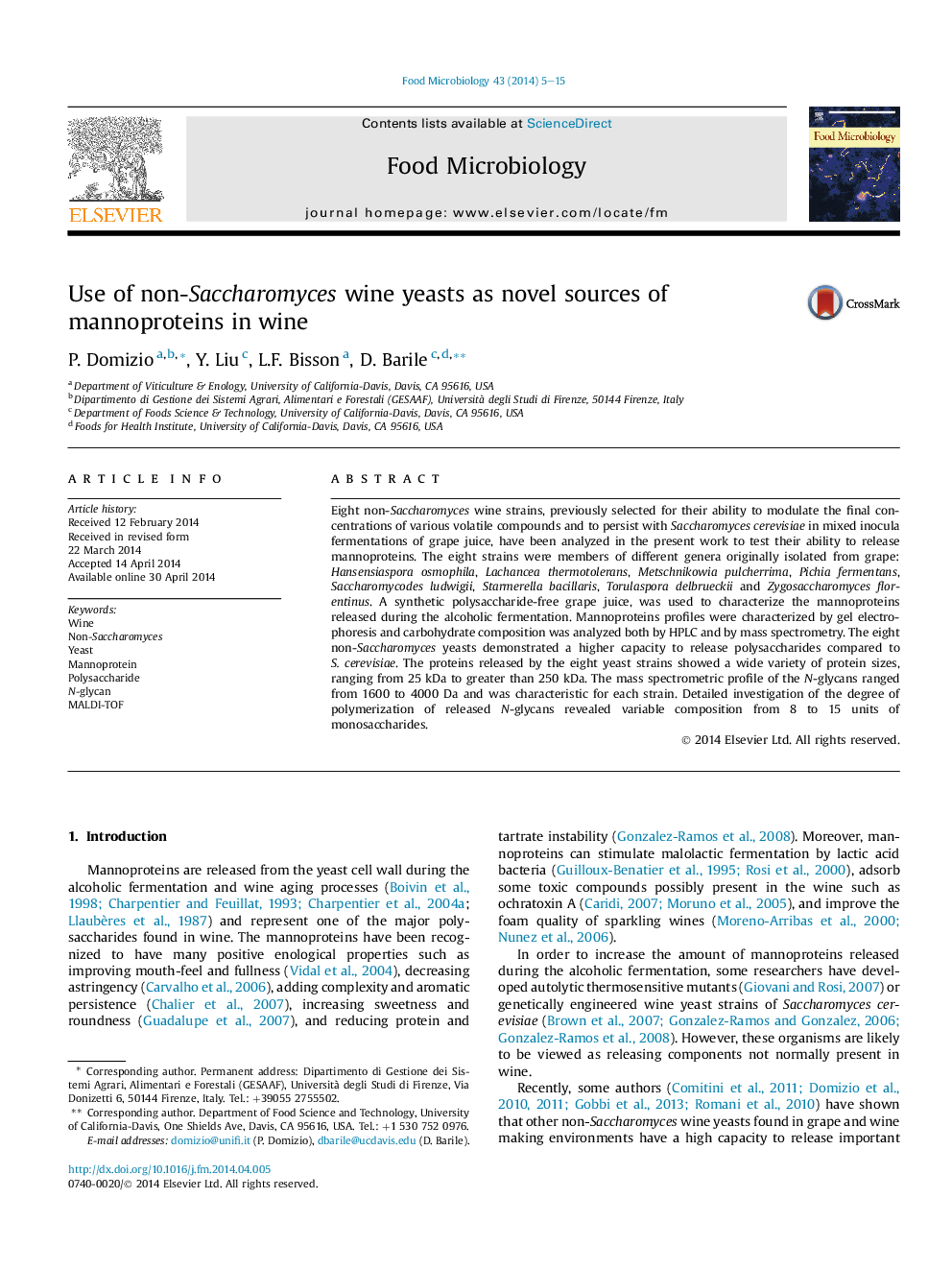| Article ID | Journal | Published Year | Pages | File Type |
|---|---|---|---|---|
| 4362862 | Food Microbiology | 2014 | 11 Pages |
•We evaluated the ability of non-Saccharomyces wine yeast to release mannoproteins.•Non-Saccharomyces release higher level of polysaccharides compared to Saccharomyces cerevisiae.•Polysaccharide release was growth-independent during the first day of fermentation.•The proteins released by non-Saccharomyces yeast showed a wide variety of sizes.•The mass profile of the N-glycans was characteristic for each strain.
Eight non-Saccharomyces wine strains, previously selected for their ability to modulate the final concentrations of various volatile compounds and to persist with Saccharomyces cerevisiae in mixed inocula fermentations of grape juice, have been analyzed in the present work to test their ability to release mannoproteins. The eight strains were members of different genera originally isolated from grape: Hansensiaspora osmophila, Lachancea thermotolerans, Metschnikowia pulcherrima, Pichia fermentans, Saccharomycodes ludwigii, Starmerella bacillaris, Torulaspora delbrueckii and Zygosaccharomyces florentinus. A synthetic polysaccharide-free grape juice, was used to characterize the mannoproteins released during the alcoholic fermentation. Mannoproteins profiles were characterized by gel electrophoresis and carbohydrate composition was analyzed both by HPLC and by mass spectrometry. The eight non-Saccharomyces yeasts demonstrated a higher capacity to release polysaccharides compared to S. cerevisiae. The proteins released by the eight yeast strains showed a wide variety of protein sizes, ranging from 25 kDa to greater than 250 kDa. The mass spectrometric profile of the N-glycans ranged from 1600 to 4000 Da and was characteristic for each strain. Detailed investigation of the degree of polymerization of released N-glycans revealed variable composition from 8 to 15 units of monosaccharides.
